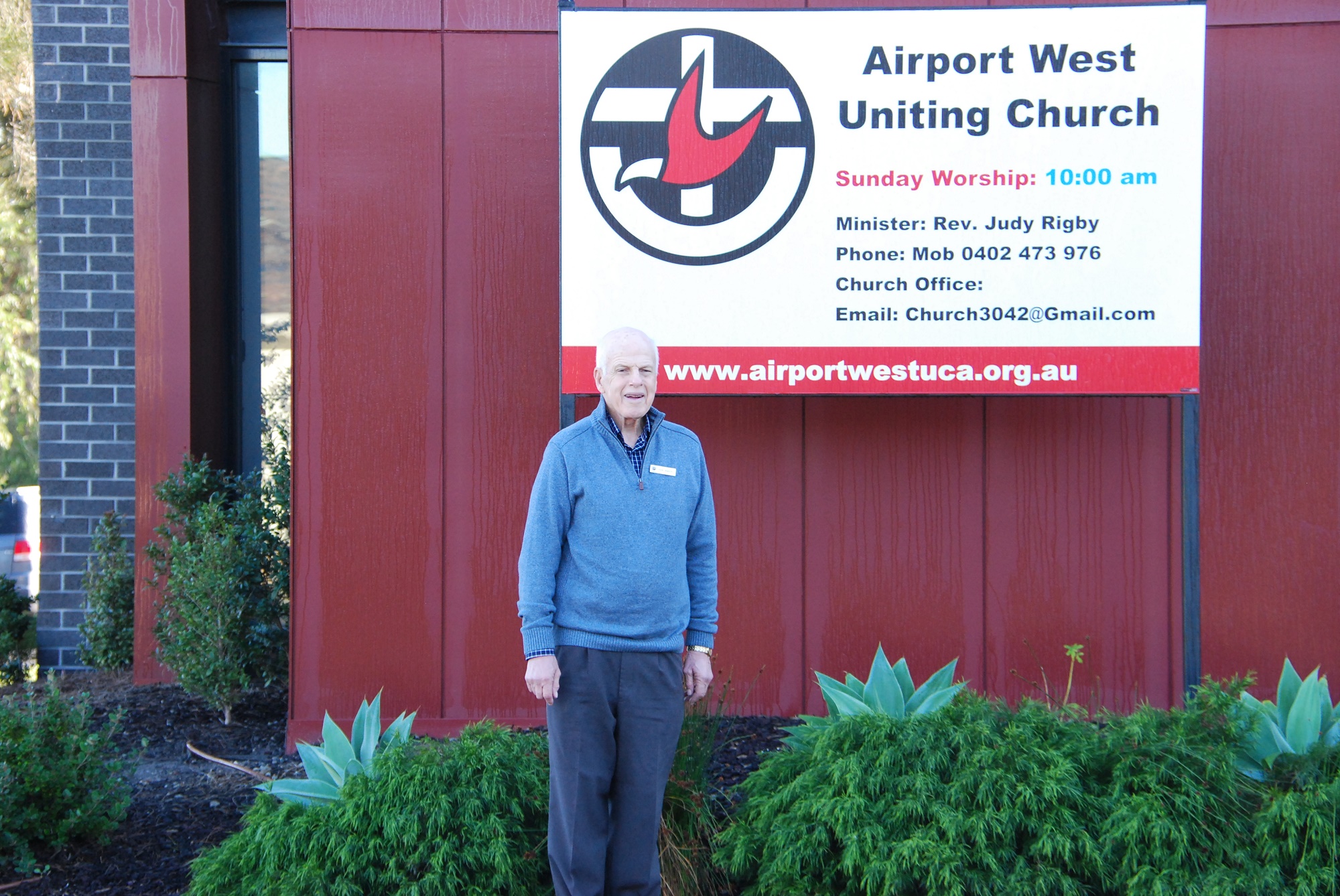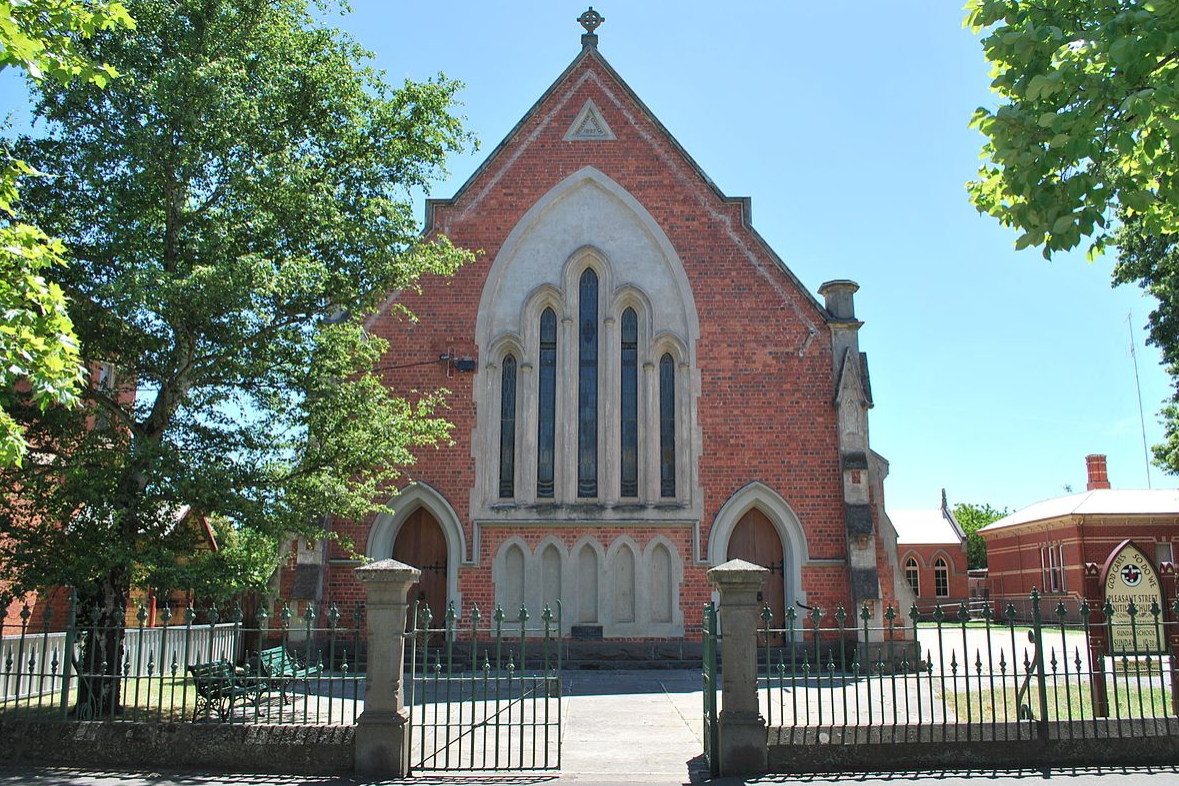By Andrew Humphries
On November 11, 1880, bushranger Ned Kelly was hanged at Old Melbourne Gaol, reportedly uttering the phrase “such is life” as he met the noose.
Kelly’s death came just 46 years after pioneer Edward Henty had established Victoria’s first European settlement at Portland Bay, 360km west of Melbourne, in 1834.
Just 23 years after Henty’s deed, Wesley Church was built in the heart of Melbourne.
Originally a Wesleyan Church, it became a Methodist Church in the union of 1902, and then part of the Uniting Church following the union with the Congregational and Presbyterian churches in 1977.
Rev Daniel Draper’s grand vision for Wesley Church was of a Gothic design, featuring high-quality architecture and, while that vision was criticised by some as being too ornate, his design prevailed, the foundation stone was laid on December 2, 1857 and the first service was held on August 26, 1858.
Daniel’s vision had come at a cost of £26,000, the equivalent of more than $2 million today and, for that sort of money, attracted more than a few accolades.
“No visitor of Melbourne can fail to be struck with the very large and handsome ecclesiastical edifice in Lonsdale Street, known as Wesley church,” John C Symons wrote in his 1870 biography, Life of the Reverend Daniel James Draper.
“It is undeniably at present the finest church in Australasia, and will bear favourable comparison with many of the churches of the old country.”
More than 160 years after its construction, a revamped Wesley Church now takes pride of place as part of the $200 million Wesley Place redevelopment in Lonsdale St, with restoration of the church itself costing about $6 million, about three times the original cost of construction.
The 35-storey office complex was constructed on land owned by the Uniting Church, on and around Wesley Church, and a partnership arrangement with developer Charter Hall means the site has not been sold, but is being leased from the Uniting Church for 125 years, assuring the Church’s future as a place of worship and community gathering.
So as the UC’s spiritual home in Victoria, Wesley Church has an important role to play, but can the same be said for every church, church hall, manse and related building within the Victorian and Tasmanian Synod?
As times change and congregation numbers dwindle, particularly in regional areas, is it time that serious questions are asked about what use can be made of buildings that are surplus to requirements and could potentially reap financial benefits?
Current Wesley Church Minister and former Synod Moderator and National Assembly President Alistair Macrae firmly believes congregations should be considering the issue carefully.
Alistair says the principle of sharing resources across the Christian community has deep Biblical roots, and he cites Paul’s call for mutual aid in 2 Corinthians 8: 7-15 as a perfect example.
“This principle of sharing from our abundance with needier parts of the church, is reflected in the way we have dealt with property sale proceeds for decades,” Alistair says.
“A significant percentage of such sales is directed to the broader mission resourcing of the church so that the whole church benefits, especially those parts of the church that may not have valuable property and other assets to finance mission.”

Assets not being used may be utilised for the betterment of all within the church.
Alistair says it is incumbent on church officials to look at how assets not being used can be utilised for the betterment of all.
“It is clear that currently our Church has very significant asset resources that are underutilised, giving the lie to our professed understanding of stewardship,” he says.
“In many cases, we have received these assets from the sacrifice and generosity of our forebears. We honour them by acting creatively, imaginatively and generously, asking the Spirit to use these received resources for the proclamation of the good news, the embodiment of God’s reign and the service of God’s world.”
In regional Victoria and metropolitan Melbourne, Ballarat and Airport West represent interesting case studies in how the sale of church assets has ensured the funding of ongoing missional work, benefiting congregations and the wider community.
In Ballarat, Pleasant Street Uniting Church (formerly Wesleyan Methodist) and Wendouree Uniting Church were both sold in September 2019, with part of the proceeds opening up opportunities to fund a range of initiatives within the Presbytery of Western Victoria.
Presbytery Minister for Pastoral Leadership and Education, Rev Trevor Bassett, says the sale of the Pleasant Street and Wendouree buildings has enabled the presbytery to fully resource the Bev Pratt Chaplaincy Centre and its services in Ballarat.
“The Presbytery was the beneficiary of those sale proceeds and as a result it is able to fund the Ballarat Regional Health Care chaplaincy program,” Trevor says.
“So that money is able to fund a full-time chaplain who co-ordinates volunteer chaplains for the major hospitals in Ballarat, as well as some of the nursing homes.
“A lot of people in western Victoria have to come to Ballarat for major medical procedures, so we think the whole presbytery benefits from having a chaplaincy network in Ballarat.
“We have invested in the chaplaincy program because we believe it’s not just a benefit to Ballarat, but also to the whole of the presbytery.”
None of this happens, though, without tough but necessary decisions needing to be made around what happens to church property that is no longer needed, but can be put to use in a financial sense.
In fact, some properties are not just no longer needed, they are often a drain on financial resources through ongoing maintenance, rates and associated costs.
When looking at all of this, Trevor argues there is little to weigh up and he is firmly in the camp that says utilising the proceeds from the sale of church infrastructure no longer needed is clearly the way to go.
“I’m very much a supporter of that concept,” he says.
“I think it represents a really positive step for the church that is going to enable a lot of smaller congregations to divest property that is really just a millstone around their neck.
“This means that money is now being freed up to provide missional opportunities which they would never have had and it is also freeing them up from the worry of maintaining ageing properties that are falling into poor repair.
“It really is a win-win situation (for congregations).”

Airport West Uniting Church chairperson Ken Baker says selling church assets no longer needed makes strong financial sense.
About 110km away in Melbourne, Airport West Uniting Church members are also reaping the rewards after making the decision to divest some church assets after the amalgamation of congregations.
Their decision, says chairperson Ken Baker, has opened up a range of missional possibilities which otherwise wouldn’t have been available.
“Our congregation has been used to a history of amalgamations from the days when we had four churches and a parish and usually this was done for missional purposes,” he says.
“After the parish went in the mid-2000s, we were left with two churches, St Mark’s in Keilor East and St Phillip’s in Airport West, and in 2012 it was decided to become one church.”
This move meant a decision was made to sell the Keilor East site and renovate and extend the Airport West site, which contained two blocks of land that the congregation was encouraged to make use of in terms of a sale.
That decision, says Ken, has allowed the congregation to ensure ongoing funding for important missional work.
“The only avenue for us to have an income to ensure our ministry into the future was to sell those blocks of land and we did that in December last year,” he says.
With the congregation about to begin receiving the proceeds from the interest on the sale of the blocks, with settlement confirmed in April, Ken says their financial future is now guaranteed.
“The outcome from the sale is a favourable one for us because it guarantees us an income,” he says.
“We want to be able to maintain a minister and continue our programs and this enables us to have a viable financial future.
“We would probably be OK with what we have now for another four or five years but, beyond that, we need an income of several thousand dollars (a year) to remain in the black.
“So the income from the interest accrued from the sale of the blocks amounts to about $35,000 a year and that will enable us to continue with our programs, have a minister and also put aside money for any renovations needed down the track.
“The fact is that without this money we wouldn’t have been able to keep anyone in ministry, because if we were looking for a minister today, I couldn’t say with any confidence that we could pay them in five years’ time.”
As a former school principal, Ken knows his way around budgets and the need to make tough decisions around finances and, like Trevor, says there should be little debate around selling church assets that are no longer of practical use.
“As far as I’m concerned, it’s the only way to go,” Ken says.
“In our case, some people were initially disappointed about the decision to sell the two blocks of land, as they were used for extra parking, but they could see the missional benefits in doing so.
“I know that there are churches sitting on buildings they no longer use, but they have to maintain them and that will become an expense into the future.
“I don’t think it’s good stewardship to sit on anything that you are not using.”

The final gift from some church buildings might be the opportunity they represent to build financially towards a more secure future.
As times change and other interests take priority, church attendances have continued to fall, as places of worship no longer hold the same pull they once did.
Journalist and church historian Christoper Akehurst has tracked the changing face of worship over the years and laments the fact that dwindling congregation numbers means many churches, of all denominations, now face the prospect of closure.
“The other category of churches most in danger now are those in Melbourne or provincial-city suburbs that were built in the two decades before the Second World War and the five decades after,” he writes in his blog, Here Today.
“Those were times of great suburban expansion, when, as earlier, all denominations wanted a local place of worship in each locality.
“According to the Heritage Council of Victoria, 743 places of worship were constructed between 1945 and 1994 in the Melbourne metropolitan area alone, and the congregations were there to go to them, since most families still maintained some sort of church connection.
“In those same suburbs, such customs and habits have all but vanished and it is there that churches, some no more than 50 years old, are most seriously threatened.
“The young parents who took their children to them when the buildings were new are old now or dead.
“The new generations that buy their houses don’t go to church. Many of these post-war churches are buildings of architectural quality and emblematic of the taste of their time.”
And while we may feel a sense of sadness at this loss and the passing of history, perhaps an opportunity opens up.
Yes, some churches and other assets may not be viable, as congregation numbers no longer support them, but that doesn’t mean they don’t represent a final gift: the opportunity for sale and ongoing funding of vital missional work.

The Pleasant Street Uniting Church in Ballarat was sold in 2019.
Setting the gold standard
In 2019, Pleasant Street Uniting Church in the heart of Ballarat was sold, ending more than 150 years as a place of worship.
The proceeds from its sale, and that of Wendouree Uniting Church, have allowed the Presbytery of Western Victoria to fully fund chaplaincy services in the region, offering support and hope to many people.
The construction of Pleasant Street offers a snapshot into one of Australia’s most famous periods, the time when Ballarat was gripped by fever: “gold fever”.
Beginning in the 1850s and continuing to the late 1860s, the gold rush led to a period of extreme wealth, setting regions including those around Ballarat and Bendigo on the path to prosperity.
“The discovery of the Victorian Goldfields has converted a remote dependency into a country of worldwide fame,” the Victorian Gold Discovery Committee wrote in 1854.
“It has attracted a population, extraordinary in number, with unprecedented rapidity; it has enhanced the value of property to an enormous extent and it has made this the richest country in the world.
“In less than three years, it has done for this colony the work of an age, and made its impulses felt in the most distant regions of the earth.”
In Ballarat, the then-Wesleyan church, which became Pleasant Street Uniting Church, opened in 1867 at the grand cost of £1700, the equivalent of about $500,000 today.
For what was to follow, that £1700 seems to have been quite a bargain, as the church played a pivotal community role over the next 150 years.
Churches such as Pleasant Street became more than just places of worship and were, in fact, cornerstones of the community: a special place where people travelled long distances to gather in a communal sense.
For many pastoral families, the Sunday service was the only time they travelled into “town” all week, making it a grand occasion and a major day out.
Long-time journalist Christopher Akehurst has been visiting and writing about churches for many years and describes Pleasant Street as “a good example of a local church as centre of social life as well as worship”.
“A fourth-generation Pleasant Street member reminisced in the (Ballarat) Courier that in her youth ‘so much … activity was church-based. There were church dances and there was a very strong Ballarat churches tennis association which was the main tennis association in this area. It was such a social hub (with) all year-round activities’.”
Christopher writes that many years ago, churches were a much bigger part of local communities.
“In the 19th and early 20th centuries, when most of Melbourne and Victoria’s churches were built, vast edifices with seating for hundreds were filled every Sunday,” he writes.
“(It was) not just one church per suburb or town, but five at least – Anglican, Roman Catholic, Presbyterian, Methodist, Congregationalist and perhaps Baptist and Church of Christ as well, together with some other denominations that have ceased to exist.
“Those churches were often of great architectural merit. Indeed, churches are not uncommonly the finest buildings in their community.”
Retired Minister and Uniting Church Historical Society member Robert Renton says the importance of early church services was reflected in how they were reported in the local media.
“In the 19th century, and to some extent in the first half of the 20th century, local newspapers reported on Sunday’s church services, and occasionally printed the sermons (or a digest of them) of the ministers,” he says.
“Oratory was still regarded in the 19th century as something of a gift and was highly valued, so sermons could extend well beyond the 12 minutes of more modern times to up to 30 or even 40 minutes in length, or even longer.”
This was a period in which ministers really did “tower” over the congregation, thanks to “a central pulpit so high that the Lord’s Table was dwarfed down on the floor”, says former minister and historical society member Peter Aumann.
In the 1950s, though, that was beginning to change, as ministers saw the need to better engage with congregations.
“By the 1950s, ministers were coming down out of high pulpits anyway, they needed to be more informal and flexible, closer, to involve people,” Peter says.

